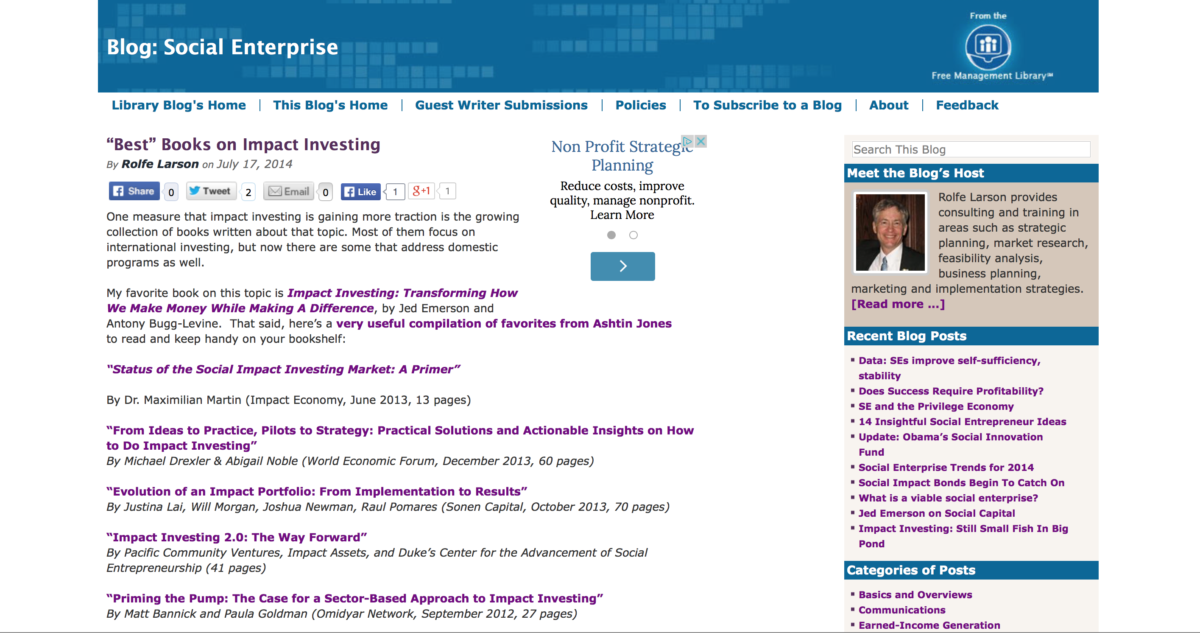
One measure that impact investing is gaining more traction is the growing collection of books written about that topic. Most of them focus on international investing, but now there are some that address domestic programs as well.

Impact investing represents a potential additional funding stream for development, but the field is still evolving and those working in it warn we may be expecting too much, too soon. While the field may be beyond its initial phase, stakeholders focused on building the infrastructure and proving its case agree that there is still much work to be done.

Charly Kleissner is a former tech entrepreneur and early pioneer of impact investing. He moved from Austria to Silicon Valley in the mid 1980s and worked for Hewlett Packard, as well as alongside Steve Jobs. Two of the start-ups that Charly worked for were successfully sold, and one (Ariba) went public in 1998. He and his wife Lisa co-founded the KL Felicitas Foundation to support social entrepreneurs around the world and to bring like-minded investors together to redefine the meaning and purpose of investing in the first place.
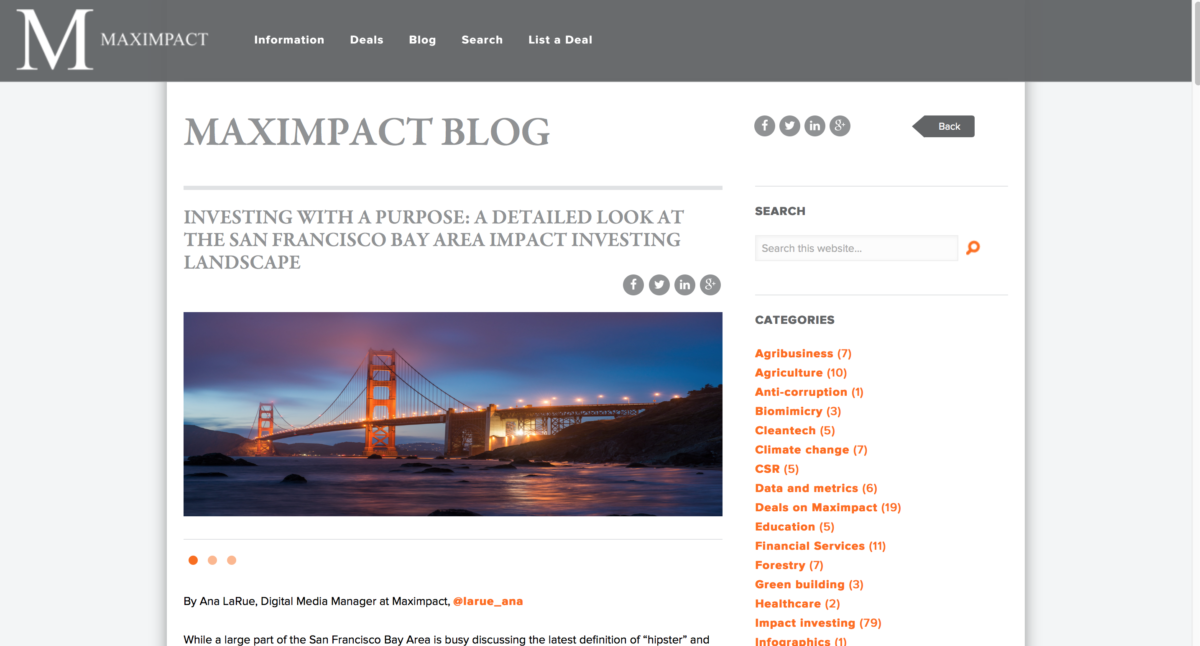
While a large part of the San Francisco Bay Area is busy discussing the latest definition of "hipster" and inflated tech valuations, there is another trend currently creating a lot of buzz. This one is related to the notion of "doing well, while doing good" by addressing social and environmental challenges through the deployment of capital.
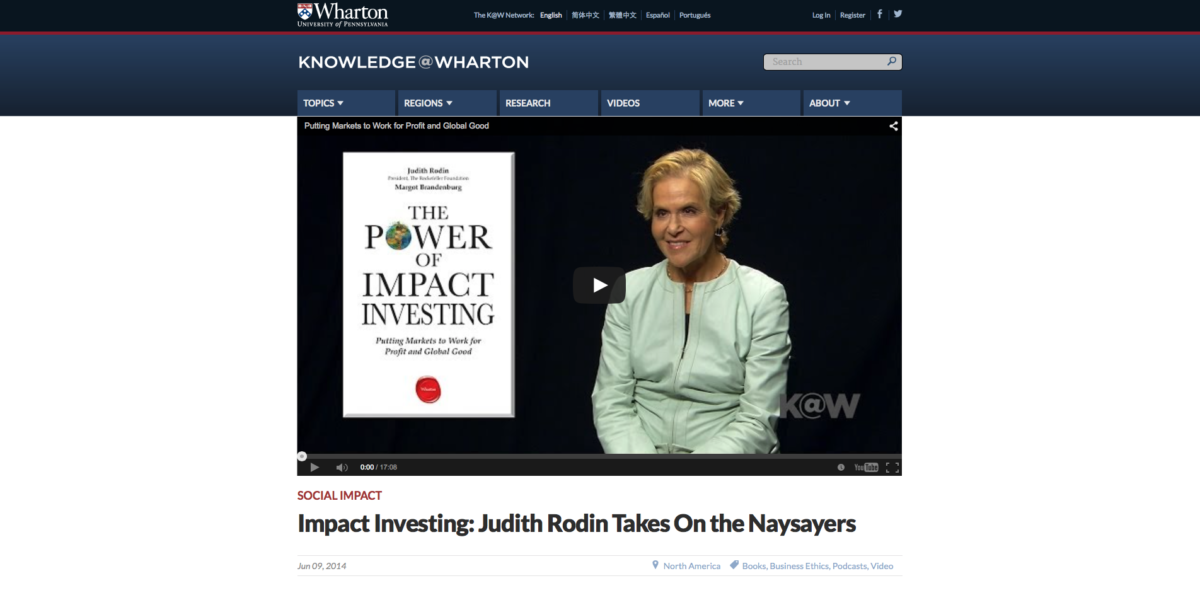
Seven years ago, a group of investors met at the Rockefeller Foundation's Bellagio Center to discuss what they had learned from a relatively new form of investing. The term "impact investing" emerged from this meeting. Since then, the impact investing industry has grown to attract a range of investors who want to achieve two goals through their investments: financial returns and social or environmental impact.
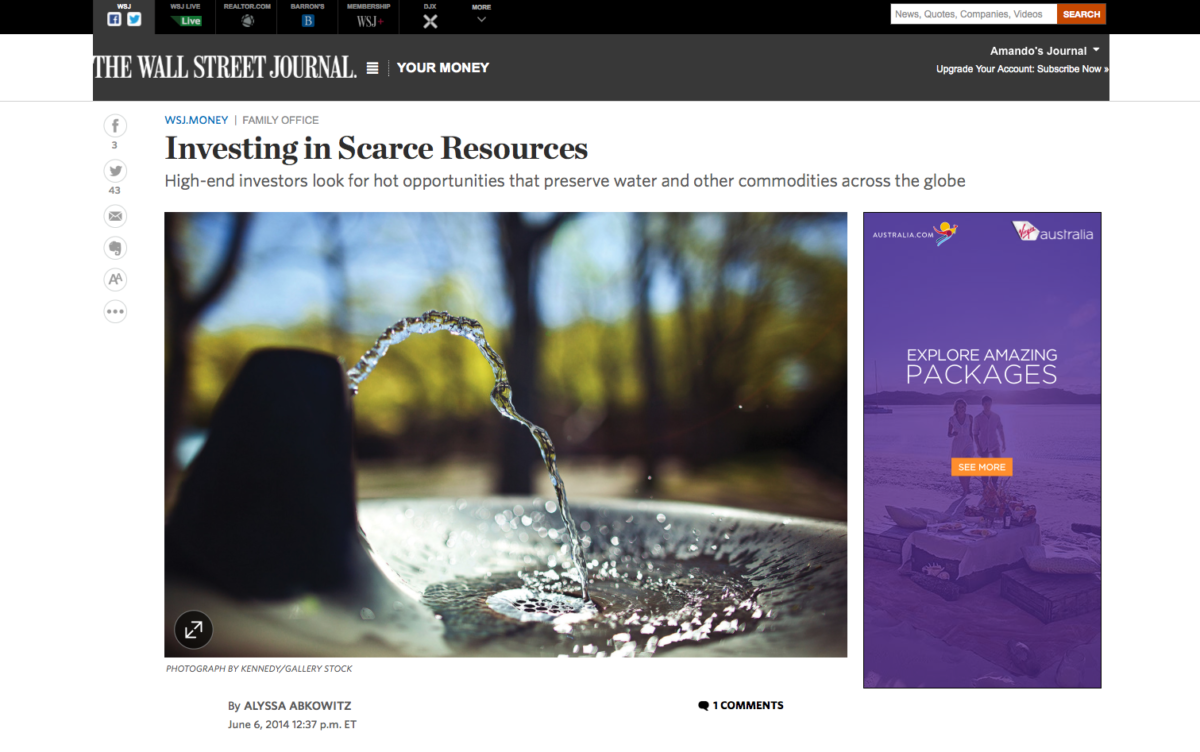
IT'S THE KIND OF investment that might be a little uncomfortable to discuss at cocktail parties, but it's a favorite in the higher-end spheres of family offices and hedge funds: capitalizing on shortages in world-wide resources.
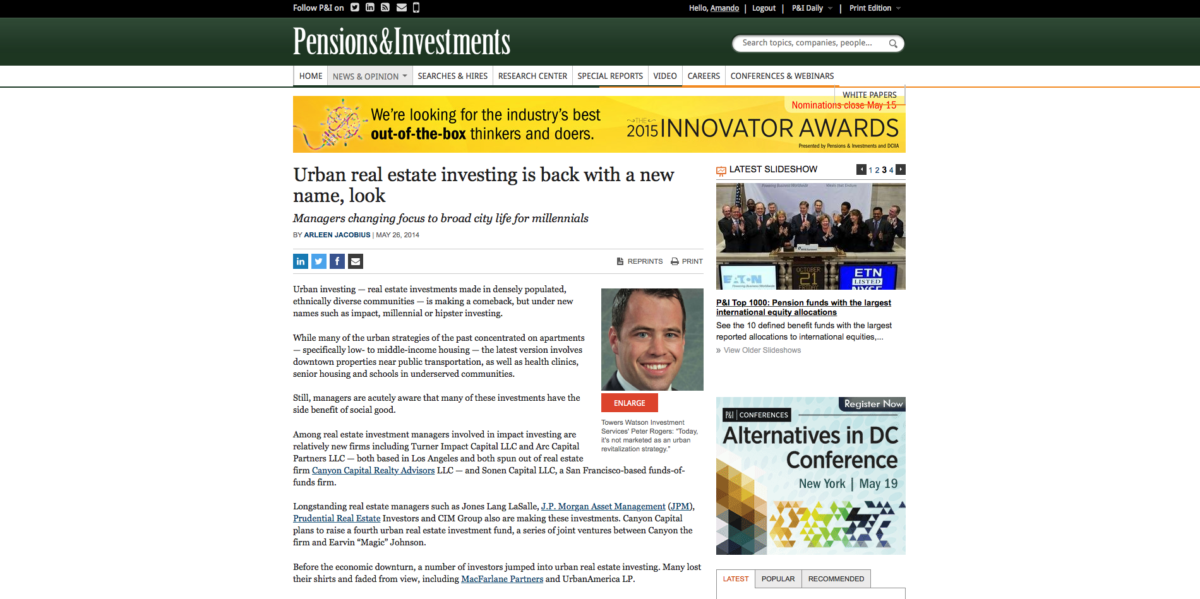
Urban investing — real estate investments made in densely populated, ethnically diverse communities — is making a comeback, but under new names such as impact, millennial or hipster investing.
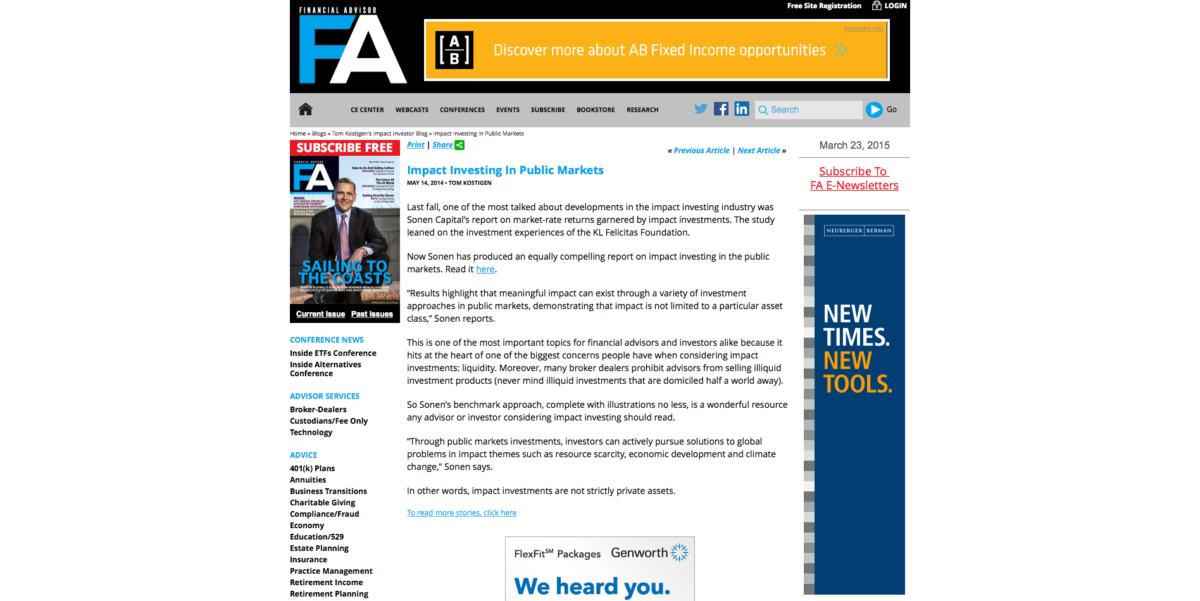
Last fall, one of the most talked about developments in the impact investing industry was Sonen Capital's report on market-rate returns garnered by impact investments. The study leaned on the investment experiences of the KL Felicitas Foundation.
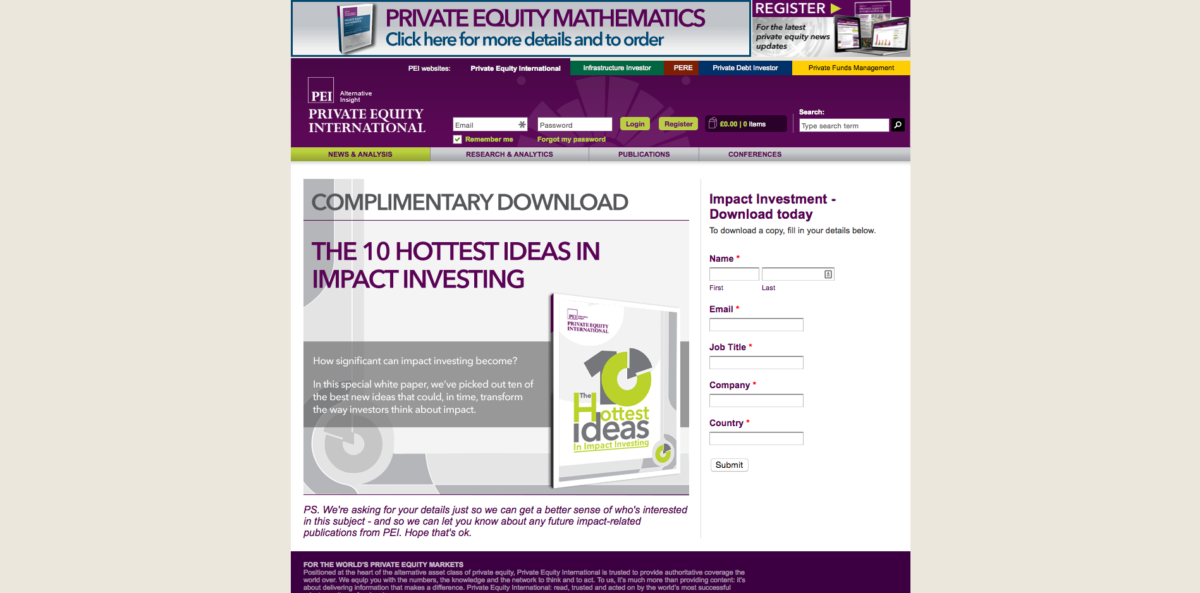
One of the biggest challenges in persuading new financial investors to commit to the impact space is the lack of historical performance data. Since this strategy is too new to have built up much of a track record (relatively few organizations have been around long enough to deliver consistent results over a period of time), how can investors be sure that the risk/return profile is right for them? That's particularly true since it's tough to build a portfolio of sufficient scale to be truly diversified.
101 Montgomery Street
Suite #2150
San Francisco, CA 94104
+1 (415) 534-4444
info@sonencapital.com